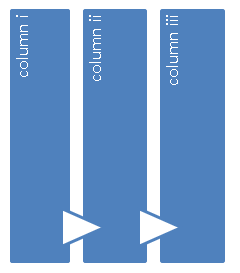This set of Chemical Process Technology Multiple Choice Questions & Answers (MCQs) focuses on “Natural Products – Fermentation”.
1. Which of the following statements are wrong?
a) Micro-organism cell wall rupture takes place under high shear stress
b) Escape velocity decreases with increase in tank size
c) Heat sterilization avoids contamination of pure cultures in fermenters
d) Rapid fermentation rates is a pre-requisite for successful fermentation process
View Answer
Explanation: Escape velocity = V*v/A, where A is the unused gas escape area, V is total volume; v is the volume of air per unit volume of liquid per unit time. V varies as D3, A varies as D2. Hence escape velocity is linearly proportional to D, which means escape velocity increases with increase in tank size.
2. Which of the following is not a design principle for sterile operations?
a) Continued use of steam for labile zones
b) Dependent sterilization of each part of system
c) Usage of Kel-F diaphragm valves
d) All welded smooth inside construction
View Answer
Explanation: Continued use of steam for labile zones, Usage of Kel-F diaphragm valves, all welded smooth inside construction, and we need to independently sterilize each part of system.
3. Name the columns using the given information? From column i, alcohol and aldehydes are removed and sent to column ii, from which alcohol is sent as side stream to column iii. Alcohol-water mixture is obtained in top side stream of column iii.

a) Column i – Beer still, Column ii – aldehyde column, Column iii – rectifying column
b) Column i – Rectifying column, Column ii – beer still, Column iii – aldehyde column
c) Column i – Aldehyde column, Column ii – rectifying column, Column iii – beer still
d) Column i – Beer still, Column ii – rectifying column, Column iii – aldehyde column
View Answer
Explanation: Firstly alcohol and aldehydes from beer still are fed to aldehyde column where aldehydes are separated and alcohol through side stream split is sent to rectifying column. In rectifying column azeotropic alcohol-water is taken off as top side stream.
4. Percentage of alcohol in beer is ______
a) 8-10% alcohol
b) 95% alcohol
c) 10-15% alcohol
d) 50% alcohol
View Answer
Explanation: 8-10% alcohol in fermented liquor is called beer. Azeotropic alcohol-water mixture contains 95% ethanol. 50-60% alcohol is taken from the beer still.
5. Bottoms from the beer still are known as _____________
a) Mash
b) Denatured spirits
c) Slops
d) Bagasse
View Answer
Explanation: While top product from beer still is sent to aldehyde column, the bottoms known as slops are concentrated so that they can be used as cattle feed or can be discharged as waste.
6. Ethyl alcohol can be produced by oxidation of petroleum.
a) False
b) True
View Answer
Explanation: Fermentation from sucrose substrate, catalytic hydration of ethylene, fermentation from starch substrate, oxidation of petroleum are some of the possible processes for manufacturing alcohol. Out of which only some are economical.
7. Which of the following operation is not involved in petroleum fermentation process?
a) Evaporation
b) Distillation
c) Leaching
d) Condensation
View Answer
Explanation: Petroleum fermentation process involves separation, condensation, fermentation, evaporation, drying, leaching, and recovery.
8. Science of fermentation is called zymology.
a) True
b) False
View Answer
Explanation: The statement is true as the science of fermentation is called zymology. It is a metabolic process and it is of 2 types: aerobic and anaerobic fermentation.
Sanfoundry Global Education & Learning Series – Chemical Process Technology.
To practice all areas of Chemical Process Technology, here is complete set of 1000+ Multiple Choice Questions and Answers.
If you find a mistake in question / option / answer, kindly take a screenshot and email to [email protected]
- Check Chemical Engineering Books
- Apply for Chemical Engineering Internship
- Check Chemical Process Technology Books
- Practice Chemical Engineering MCQs
